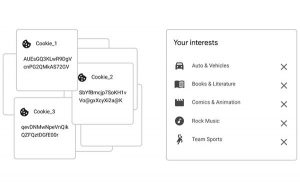A recent report from Hitwise estimates mobile search volume in the US has reached nearly 60% of total search volume. As mobile search volume continues to grow, digital marketers are constantly adjusting and optimizing campaigns to capitalize on this growth, ahead of their competitors. And, with the rise of mobile usage, hyper-local search volume is becoming more and more prevalent. Especially with a more conversational type of search queries, such as “near me.”
In the past three years, Google Trends has shown a continuous growth in “near me” search volume. Whether your SEO strategy is focused on ecommerce, lead gen, branding, or even engagement, a local search strategy shouldn’t elude you.
As digital marketers, we have a lot of daily, weekly and monthly optimizations to complete. That’s why I wanted to list out my top 5 strategies to improve your local search visibility.
Ensure Your Site is Responsive and Mobile-Optimized
Ensuring your site is responsive and mobile-optimized is no small task. You need developers to recode your site so the line, text, and photo breaks work together to still deliver a cohesive brand message and still be user friendly. Google has recently put more emphasis on building a mobile ranking algorithm. It’s now more important than ever to put resources towards ensuring your site is responsive.
To check if your site is up to Google’s mobile-friendly standards, input your domain here!
Monitor and Update Google My Business
Google My Business (GMB) is a free tool Google provides for brands to upload their name, location, and phone number information that’s unique to every location or branch. By ensuring every listing in your GMB account is accurate and up to date, you give Google the data to accurately map locations and provide local search visibility.
GMB is also a great tool for PPC marketers to integrate with Google AdWords accounts for location extensions. For call extensions, it’s beneficial to go beyond Google Forwarding numbers. Call attribution and tracking for search gives you keyword- and match type-level attribution, as well as CRM integration and conversation insight.
Improve Your Mobile Load Time
Google has indicated site speed is a core factor in their mobile ranking algorithm. That’s not all fast site speed is good for. It’s also important to provide a good user experience and improve overall bounce rates.
As a digital marketer there is nothing more frustrating than optimizing your SEO keywords to get first page ranking in search, only to have high bounce rates after searchers click. Moz, a trusted SEO resource, offers some good tips on how to reduce site speed.
Another good resource to find the culprit page(s) is your Google Analytics account. If you navigate to the “Behavior” reports section and filter down to “Site Speed Page,” Google Analytics will give you each page’s site speed for the time frame you choose to monitor improvements, as well as dips in speed performance.
Measure Mobile Conversion Types
You can also use your Google Analytics to track conversions from your SEO efforts. Consumer behavior on mobile devices can vary widely from their desktop behavior. So, as a digital marketer, it’s important you derive insight on those differences and how you can adjust your optimizations to reach consumers who research on mobile devices.
Start by measuring and optimizing for phone calls as a first step. Consumers who search on mobile devices often find it easier to reach a brand via a phone call instead of form fill. Ensure your pages are optimized to allow consumers to call your brand with click-to-call functionality.
Optimize for Natural Keyword Language
It’s always a good idea to keep your keyword strategy fresh. Search queries on mobile devices can differ from those on desktops. Think short form keyword versus long form keywords, and even voice search. When consumers are on the go, they’ll turn to their smartphones to find the business closest to them, i.e., “near me.”
Start by optimizing for your brand keywords and “near me.” Then move on to include generic terms and any individualized locations. This will allow your local ranking to not only improve in page proximity, but also improve click-through rates.
Building a local search strategy is just as important for your customers as it is for your search visibility. You want to create the best experience possible for any customer or prospect that wants to research or reach your brand. For more SEO tips, read here!
Digital & Social Articles on Business 2 Community(30)




